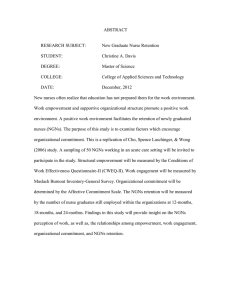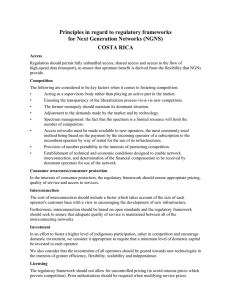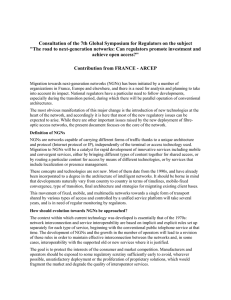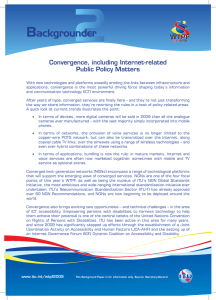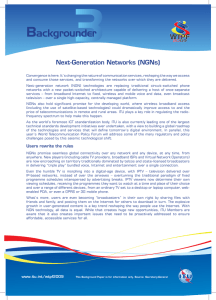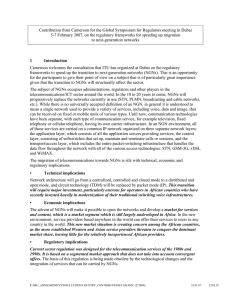GSR07 Contribution by the Organismo Supervisor de Inversión Privada
advertisement
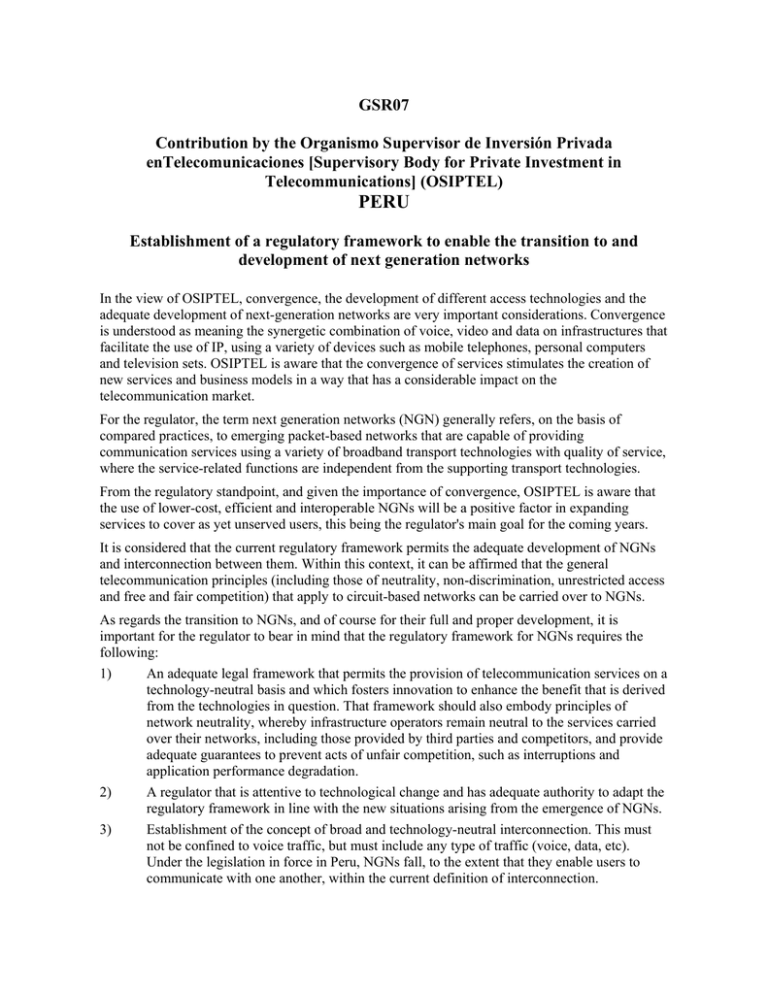
GSR07 Contribution by the Organismo Supervisor de Inversión Privada enTelecomunicaciones [Supervisory Body for Private Investment in Telecommunications] (OSIPTEL) PERU Establishment of a regulatory framework to enable the transition to and development of next generation networks In the view of OSIPTEL, convergence, the development of different access technologies and the adequate development of next-generation networks are very important considerations. Convergence is understood as meaning the synergetic combination of voice, video and data on infrastructures that facilitate the use of IP, using a variety of devices such as mobile telephones, personal computers and television sets. OSIPTEL is aware that the convergence of services stimulates the creation of new services and business models in a way that has a considerable impact on the telecommunication market. For the regulator, the term next generation networks (NGN) generally refers, on the basis of compared practices, to emerging packet-based networks that are capable of providing communication services using a variety of broadband transport technologies with quality of service, where the service-related functions are independent from the supporting transport technologies. From the regulatory standpoint, and given the importance of convergence, OSIPTEL is aware that the use of lower-cost, efficient and interoperable NGNs will be a positive factor in expanding services to cover as yet unserved users, this being the regulator's main goal for the coming years. It is considered that the current regulatory framework permits the adequate development of NGNs and interconnection between them. Within this context, it can be affirmed that the general telecommunication principles (including those of neutrality, non-discrimination, unrestricted access and free and fair competition) that apply to circuit-based networks can be carried over to NGNs. As regards the transition to NGNs, and of course for their full and proper development, it is important for the regulator to bear in mind that the regulatory framework for NGNs requires the following: 1) An adequate legal framework that permits the provision of telecommunication services on a technology-neutral basis and which fosters innovation to enhance the benefit that is derived from the technologies in question. That framework should also embody principles of network neutrality, whereby infrastructure operators remain neutral to the services carried over their networks, including those provided by third parties and competitors, and provide adequate guarantees to prevent acts of unfair competition, such as interruptions and application performance degradation. 2) A regulator that is attentive to technological change and has adequate authority to adapt the regulatory framework in line with the new situations arising from the emergence of NGNs. 3) Establishment of the concept of broad and technology-neutral interconnection. This must not be confined to voice traffic, but must include any type of traffic (voice, data, etc). Under the legislation in force in Peru, NGNs fall, to the extent that they enable users to communicate with one another, within the current definition of interconnection. 4) 5) Where the interconnection of NGNs is concerned, the importance of supervised negotiation has to be borne in mind. The current legal framework ensures, for the purposes of NGN interconnection, the application of a supervised negotiation arrangement between operators. In other words, intervention by the regulator would be on an exceptional basis, occurring only in cases where the parties failed to reach agreement and where such failure would be liable to harm the interests of users. A clear and precise classification of services, in regard to whether the services provided over NGNs will qualify as bearer, end or value-added services. To the extent that, under Peru's current legal framework, these networks may qualify as bearer or end networks in terms of the services they provide to users, their operators will have the protection of compulsory interconnection. However, even where they qualify as value-added services, the regulator will have sufficient legal authority to determine, in each specific case, whether the establishment of interconnection is called for. OSIPTEL International Relations Unit rrii@osiptel.gob.pe _______________________________
